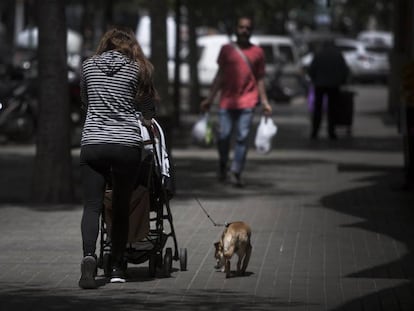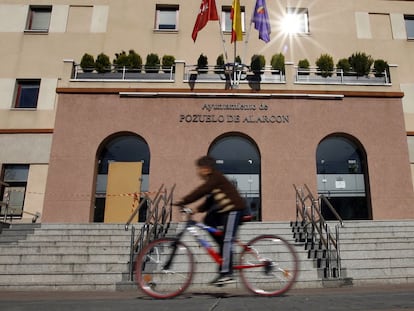How poor is Spain’s poorest town?
Zafarraya in the province of Granada officially has the lowest per capita income in Spain, sustaining itself through agriculture and government subsidies

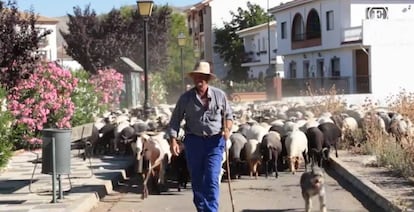
You only have to look at Zafarraya to guess the primary driver of its economy. This little town of 2,040 inhabitants in the province of Granada is surrounded by seemingly never-ending fields of vegetables – so many, in fact, that it seems like the tomato and zucchini plants are invading, vines sneaking into the cobbled streets. In 2013, after the Spanish Tax Agency analyzed income returns, its research concluded that Zafarraya was the town with the lowest per capita income in all of Spain: just €10,293 per resident.
“Here everyone works in agriculture,” said José Miguel Bonilla, a 53-year-old shepherd. Behind him and his flock of sheep, African immigrants are toiling away as day laborers, and this backdrop can be seen from almost every corner of town. Among the locals, the constant debate revolves around the same phrase: informal economy. “We’re the poorest? That’s a lie,” they insist. “What happens is that nobody declares everything they’re supposed to declare.”
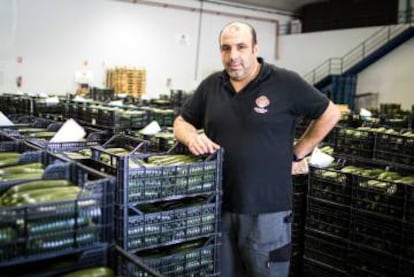
Zafarraya is located about 80 kilometers southwest of Granada, an hour-and-a-half trip mostly using back roads. Once you leave the mountain behind, el llano (“the plain”) appears, which is what the people of Zafarraya call the nearby valley. Encircled by mountains with a tropical climate that rarely exceeds 30ºC, the valley is perfect for the irrigated agriculture that Zafarraya depends on.The town boasts five supermarkets, a couple of repair shops and six bars. The agricultural sector relies on just three warehouses that package the vegetables and prepare them to be sent off within and outside of Spain.
At Valentín, a café just a few meters from City Hall, the earliest-rising retirees sip their first coffee of the morning for a euro. Nobody wants to give their name, but they all want to talk.
Some residents point out that the statistics don’t reflect the truth because so many people don’t declare all of their income. Many take issue with the day laborers, who they say under-report their earnings in order to “not lose the rural unemployment benefits” that they receive through Spain’s Plan de Empleo Rural (PER), which was established in 1986 to combat unemployment and assist poor farm workers. Of the group, only 64-year-old Angélico Ros is willing to comment frankly and openly. “Here there’s no kind of poverty. Here no one declares their land, their rent, or their income. Look at those cars!” he exclaims as a Mercedes drives by, followed by a BMW. Between this string of high-end cars and the well-maintained facades of the houses, it has to be said that Zafarraya does not come across as a town mired in poverty.
About the question of an underground economy, the mayor says, “I have no idea. I’m not a tax inspector”
Socialist local council
Socialist Party (PSOE) Mayor Rosana Molina runs the local council, backed by five councilors from her party and another from the United Left. The opposition consists of five from the conservative Populist Party. “We have a fluctuating economy that depends on cultivation. There are good years and bad years. Prices can vary up to 200% from one season to the next,” says the councilwoman. This season, tomatoes cost 80 cents per kilogram and zucchini 30 cents, according to workers at one of the warehouses.
When asked directly about a flourishing black economy, Molina responds, “I’m not going to get myself involved in all that. I have no idea, honestly. It’s not appropriate for me, I’m not a tax inspector.” She emphasizes that she doesn’t believe her town has the lowest per capita income in Spain. As of June 30, 2016, 863 people were in receipt of Social Security benefits, 534 of whom were registered in the regional government’s Agrarian Plan.
One of the 173 local people who work the land is 70-year-old José Miguel Ortigosa, who has five hectares of tomatoes, zucchini, beans and peppers. Unlike his neighbors, Ortigosa denies emphatically that there is any sort of underground economy in Zafarraya. He oversees 13 workers, all immigrants, paying them €6 an hour and says they all have their papers in order. “There are thousands of immigrants that rent land from their neighbors. If they give them discounts, what they save is more or less the same as a daily wage.’
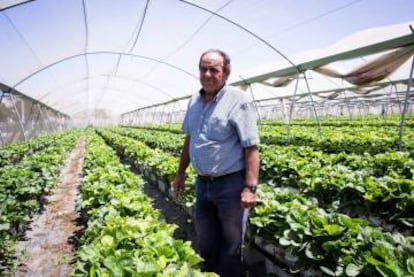
There is one thing Zafarraya’s residents all seem to agree on: only about 30% of Spanish landowners in the town are working their land themselves, with the other 70% hiring immigrants, and some immigrants even hiring other immigrants to do the actual farming. Ortigosa says he can turn over up to €100,000 in a season (May to October) but he says that after deducting production costs, he’s left with around €30,000 per harvest. Furthermore, he stresses that 2013 – the year that the statistics were gathered to crown Zafarraya as the lowest-income town in Spain – saw a particularly low crop turnout.
According to the Spanish National Statistics Office, 230 of the 2,040 residents of the town are aged 18 or younger; 291 are 65 or older; and 1,419 are somewhere in between. In the local supermarket, 29-year-old cashier Cristina García says some young people have stayed. “Not everyone in the town is older. There are some who have left to study, but others stayed here to work with the livestock or the farms,” she comments. One of the young women buying groceries, María Isabel Luque, says that she’s never wanted for anything. In response to Zafarraya’s supposedly low average income, she jokes: “That’s because everyone’s mixed up in something shady.”
In one of the warehouses, about 20 workers (all Spanish, mostly from Zafarraya) stack boxes of zucchini. One of them, 36-year-old Iván Zamora, has lived here all his life. He used to cultivate the crops, like many of his friends, although now there are fewer and fewer residents out in the fields. Now, he works exclusively on loading the goods into trucks; his salary depends on the kilograms of produce that he transports. He arrives at 9am and finishes at sunset. “You have to get right to work.”
Immigration
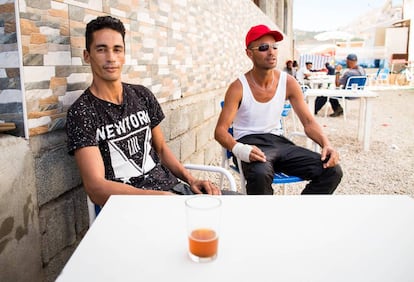
Again and again, Zafarraya’s residents bring up the issue of “the huge number of immigrants” that have settled in the town, and it’s apparent once you begin to walk around. It’s Friday, the day of worship for Muslims, and a line of immigrants from Northwest Africa winds through the streets all the way to the town entrance. Thirty or so men huddle together in an abandoned building that they sometimes use as a mosque, about 100 meters from the warehouse.
They drink tea and complain about working conditions. Abdil Aziz, a 35-year-old Moroccan, came to Spain 20 years ago in a dinghy. He says he makes €3.05 per hour and sleeps in a car. “I’m not paying into the Social Security system. I don’t have medical coverage or a place to shower. It doesn’t matter whether my boss is a Spaniard or an immigrant – the immigrants have just copied the ways of the people who are from here,” he says.
English version by Allison Light.
Sign up for our newsletter
EL PAÍS English Edition has launched a weekly newsletter. Sign up today to receive a selection of our best stories in your inbox every Saturday morning. For full details about how to subscribe, click here.
Tu suscripción se está usando en otro dispositivo
¿Quieres añadir otro usuario a tu suscripción?
Si continúas leyendo en este dispositivo, no se podrá leer en el otro.
FlechaTu suscripción se está usando en otro dispositivo y solo puedes acceder a EL PAÍS desde un dispositivo a la vez.
Si quieres compartir tu cuenta, cambia tu suscripción a la modalidad Premium, así podrás añadir otro usuario. Cada uno accederá con su propia cuenta de email, lo que os permitirá personalizar vuestra experiencia en EL PAÍS.
¿Tienes una suscripción de empresa? Accede aquí para contratar más cuentas.
En el caso de no saber quién está usando tu cuenta, te recomendamos cambiar tu contraseña aquí.
Si decides continuar compartiendo tu cuenta, este mensaje se mostrará en tu dispositivo y en el de la otra persona que está usando tu cuenta de forma indefinida, afectando a tu experiencia de lectura. Puedes consultar aquí los términos y condiciones de la suscripción digital.
More information
Archived In
Últimas noticias
Most viewed
- Pablo Escobar’s hippos: A serious environmental problem, 40 years on
- Why we lost the habit of sleeping in two segments and how that changed our sense of time
- Charles Dubouloz, mountaineering star, retires at 36 with a farewell tour inspired by Walter Bonatti
- Reinhard Genzel, Nobel laureate in physics: ‘One-minute videos will never give you the truth’
- The Florida Keys tourist paradise is besieged by immigration agents: ‘We’ve never seen anything like this’
